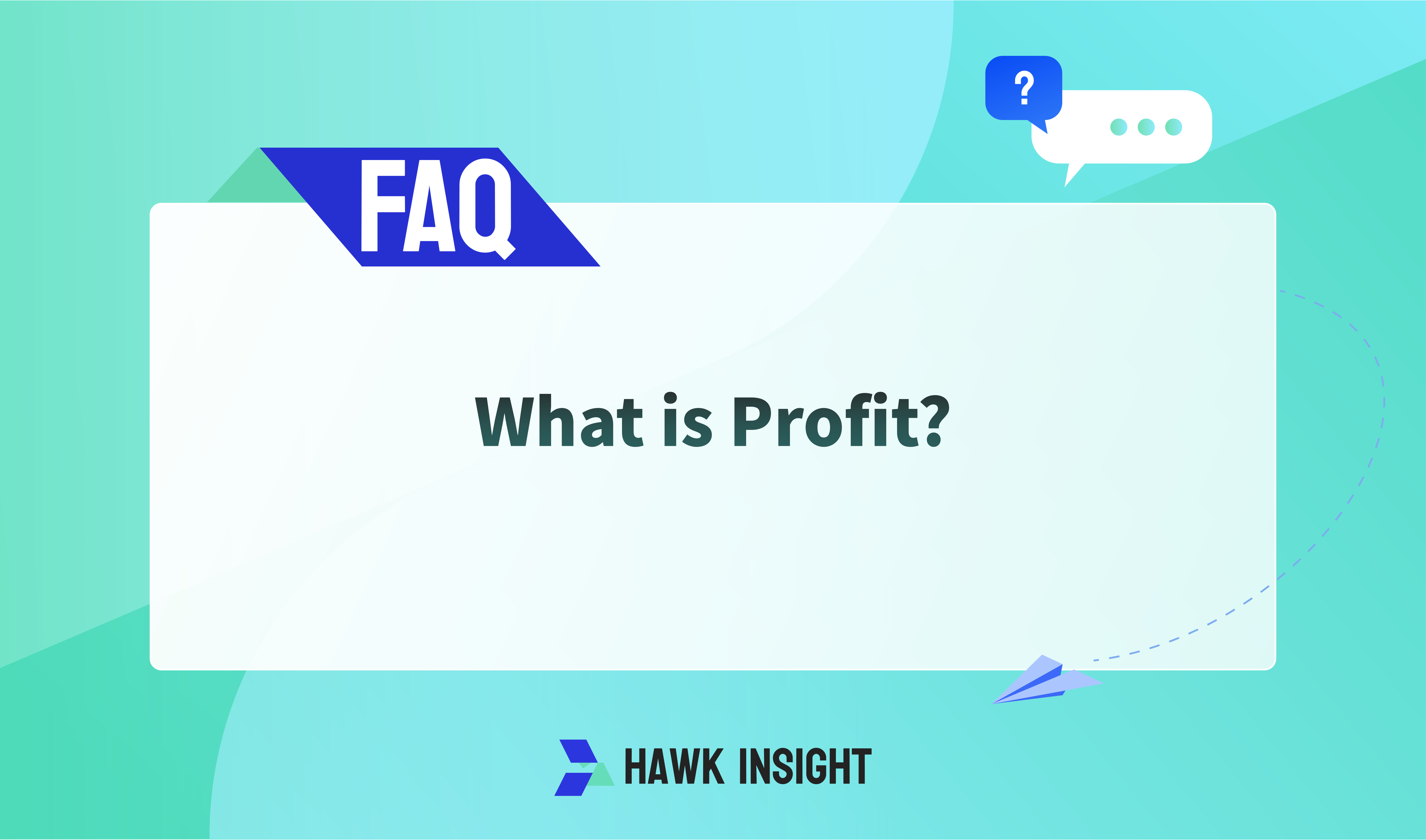What is Profit?
Profit is a bottom-line comparison of revenues to costs and is an important measure of a company's financial performance, defined as total revenues minus total expenses.

Profit is an important indicator of a company's financial performance, defined as total revenue minus total expenses. By analyzing the income statement, investors can understand a company's profitability. The profit calculations in the income statement can be categorized into several forms, including gross profit, pre-tax profit, and net income.
Profit Calculation
Taking the hypothetical company Catsmart (assumed stock code: CTSM) as an example, we analyze its financial data for the first quarter of 2022:
- Total Revenue: $123.9 billion
- Cost of Sales: $93 billion
1.Gross Profit Calculation
Gross profit is the revenue remaining after deducting direct sales costs, reflecting the basic profitability.

2.Pre-Tax Profit Calculation
Pre-tax profit further deducts selling expenses, administrative expenses, and interest on debt from gross profit. The specific calculation is as follows:
- Selling Expenses: $25.9 billion
- Interest on Debt: $625 million
- Interest Income: $837 million

3.Net Income Calculation
Net income is the most comprehensive profit indicator, considering all expenses and the impact of taxes.
- Taxes: $1.3 billion

Importance of Profit
Profit is a crucial basis for investors to assess a company's true performance. High profits generally indicate effective cost management and strong sales, reflecting a company's market competitiveness. However, negative profits are not always a bad sign. For instance, growth-oriented companies may choose to invest heavily in their early stages, aiming for higher returns in the future.
Differences Between Profit and Other Financial Indicators
- Gross Profit: Revenue remaining after deducting the cost of sales, measuring the basic profitability of products.
- Pre-Tax Profit: Further deducts operating expenses and interest from gross profit.
- Net Income: The most comprehensive profit indicator, accounting for all expenses and taxes.
Differences Between Profit, Revenue, and Sales
-
Revenue:
- The total amount earned by a company from selling goods or services, including all operating and non-operating income (such as investment income).
- It is the most comprehensive metric for assessing a company's scale and market performance.
-
Sales:
- Typically refers to the income generated from selling products or services, specifically related to core business activities, excluding other income sources.
- Sales are a part of revenue, focusing on the performance of the main business.
-
Profit:
- The difference between revenue and expenses, reflecting the actual amount earned after costs are deducted.
- Profit can be classified into various types, such as gross profit, pre-tax profit, and net profit, representing different levels of a company's profitability.
Differences Between Profit and Profit Margin
-
Profit:
- The absolute difference between a company's income and expenses, representing the actual amount earned during a specific period.
- It can be used to gauge a company's profitability.
-
Profit Margin:
- The ratio of profit to revenue, usually expressed as a percentage, reflecting the profit retained per unit of revenue.
- A high profit margin indicates effective cost control and pricing strategies, while a low margin may suggest high costs or the need for pricing strategy adjustments.
Differences Between Net Profit and Gross Profit
-
Gross Profit:
- Calculated as total revenue minus the cost of sales, mainly reflecting the basic profitability after selling goods or services.
- It does not consider other expenses such as selling, administrative, or tax costs.
-
Net Profit:
- The profit after all expenses (including cost of sales, operating expenses, interest, and taxes) are deducted, representing the true level of profitability.
- It is an important indicator for assessing a company's overall financial health.
Can Profit Be Negative?
Yes, profit can be negative when a company's total revenue falls below its total expenses, indicating a loss during a specific period. Although negative profit is generally seen as a negative signal, in some cases, growth companies may incur losses while investing heavily to expand market share. This strategy can potentially yield greater returns in the future. Therefore, negative profit does not always signify poor company performance; understanding the underlying reasons and long-term strategies is crucial.
Limitations of Profit
While profit is an important indicator of a company's financial health, it should not be the sole measure of overall performance. Profit calculations may not directly reflect cash flow, making the analysis of a company's cash flow statement critical. Additionally, a company's debt level (as shown on the balance sheet) is also an important factor in evaluating its financial stability. Long-term debt can affect a company's profitability and cash flow.
·Original
Disclaimer: The views in this article are from the original Creator and do not represent the views or position of Hawk Insight. The content of the article is for reference, communication and learning only, and does not constitute investment advice. If it involves copyright issues, please contact us for deletion.